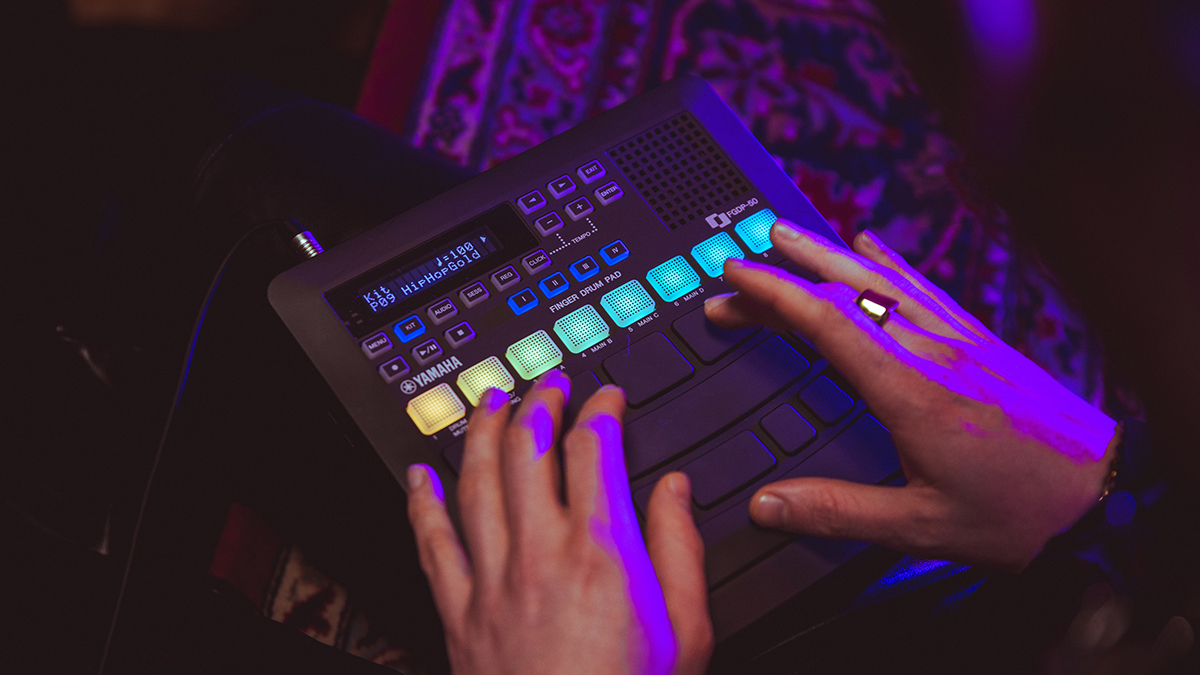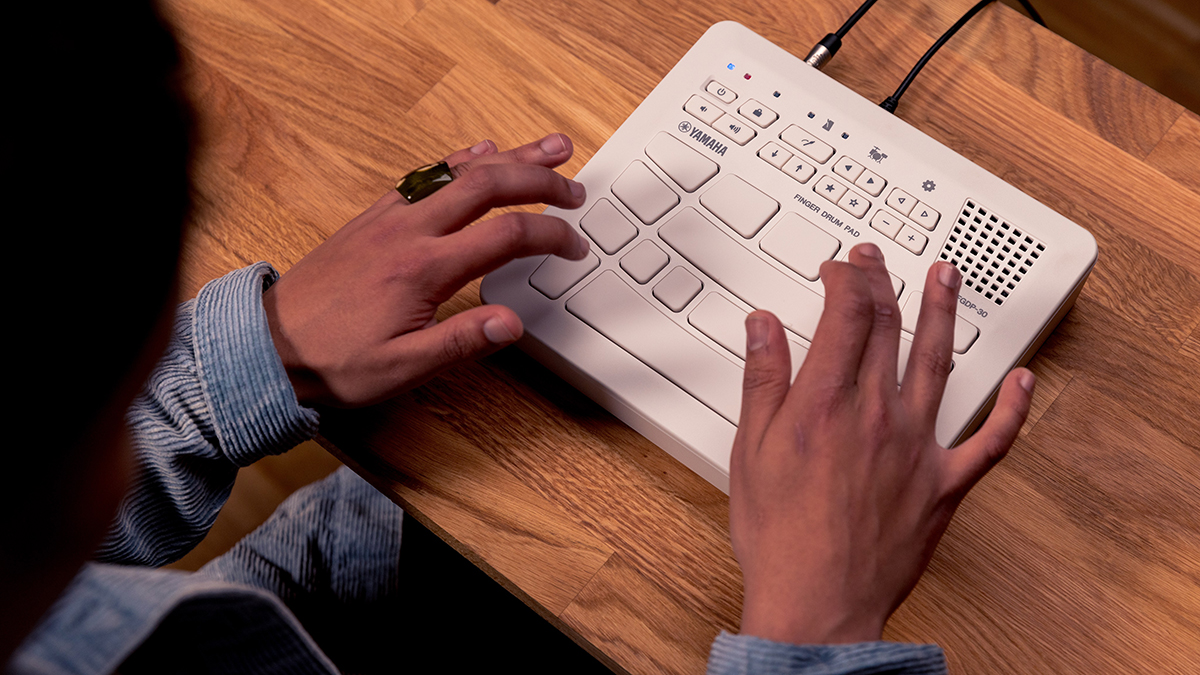Yamaha’s new FGDP-50 and FGDP-30 are portable, standalone finger drumming pads with DTX sounds
Both models come with a built-in speaker and rechargeable battery
Get ready to flex your phalanges, because Yamaha has released two new finger drumming pads in the shape of the FGDP-50 and FGDP-30.
Designed to capitalise on the increasing popularity of tabletop beat performing, each model features a core setup of 18 pads, with the FGDP-50 also offering a further eight RGB-lighted pads, a display, flash drive support for playback/recording and note repeat.
The layout is said to be conducive to three-finger drumming, with the thumb triggering the kick, the index finger firing the snare and the middle finger powering the hi-hat. The pads are velocity-sensitive, and pushing down on one mutes the sound (useful for creating cymbal choke effects, for example).
Speaking of sounds, Yamaha has reconfigured the ones from its DTX modules for the new pads. These are said to have been optimised for playing with fingers rather than sticks, with special focus put on how they respond to different velocities.
The sound libraries are well-stocked, too: there are 1,500 voices and 48 preset kits inside the FGDP-50, and 1,212 voices and 39 preset kits in the FGDP-30.
Both FGDP pads can operate completely standalone thanks to their built-in 2.5w speakers and rechargeable lithium-ion batteries. That said, you can also use them as MIDI controllers via the USB port, which also outputs audio and enables playback from another device so that you can jam along.
Yamaha FGDP-50 and FGDP-30 should be available right now priced at £335 and £200 respectively. Find out more on the Yamaha website.
Get the MusicRadar Newsletter
Want all the hottest music and gear news, reviews, deals, features and more, direct to your inbox? Sign up here.





I’m the Deputy Editor of MusicRadar, having worked on the site since its launch in 2007. I previously spent eight years working on our sister magazine, Computer Music. I’ve been playing the piano, gigging in bands and failing to finish tracks at home for more than 30 years, 24 of which I’ve also spent writing about music and the ever-changing technology used to make it.









